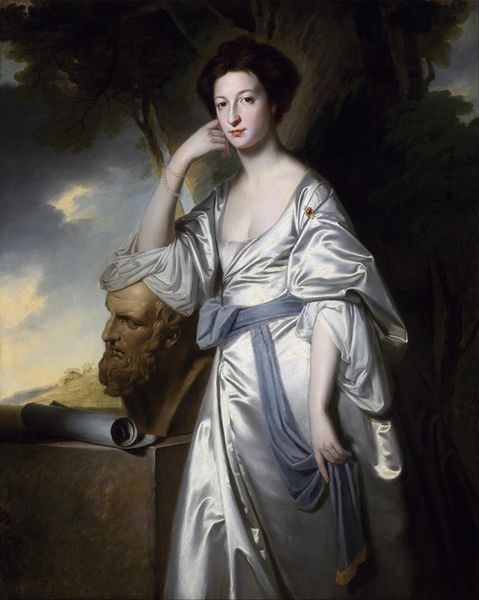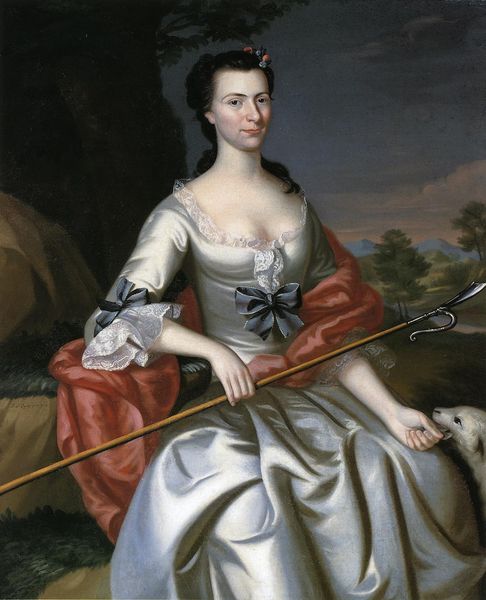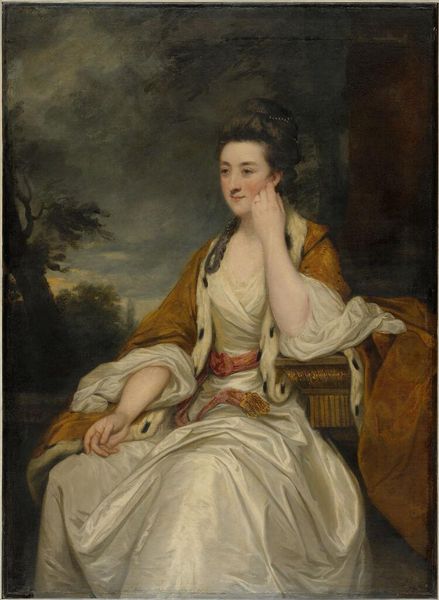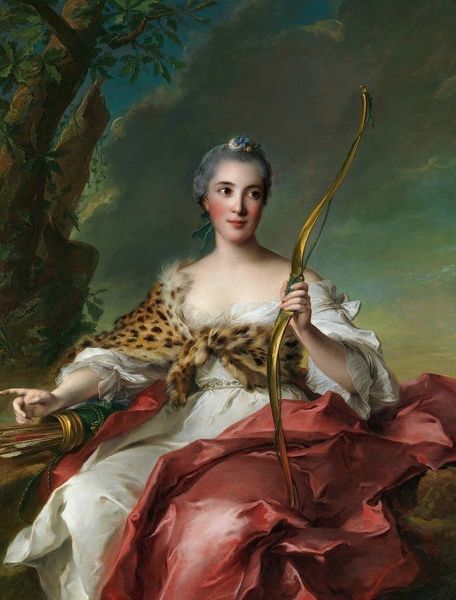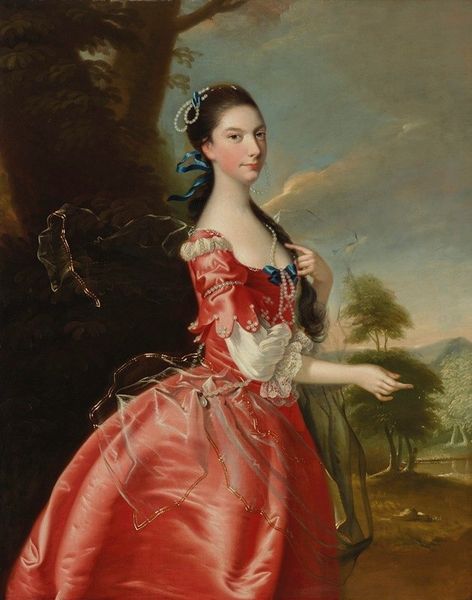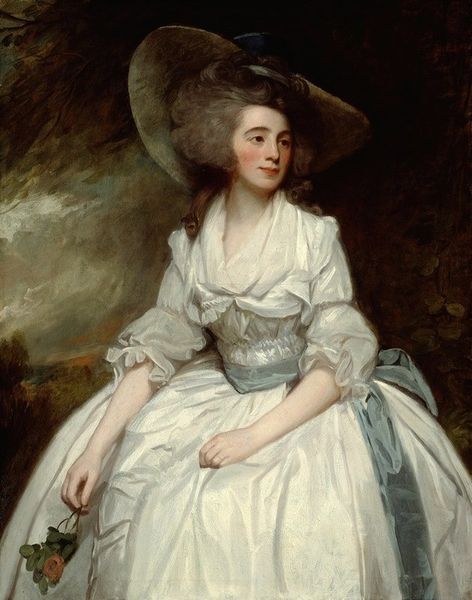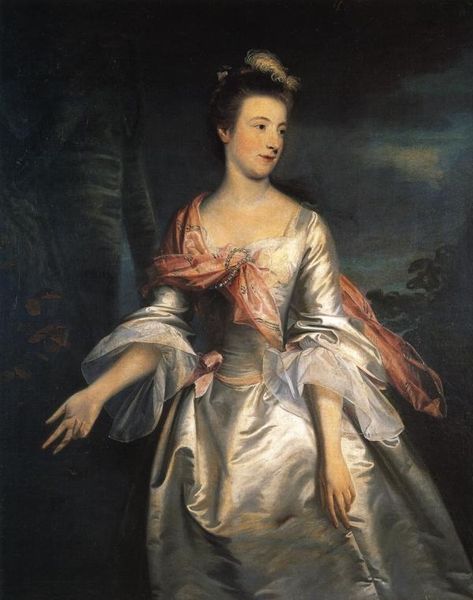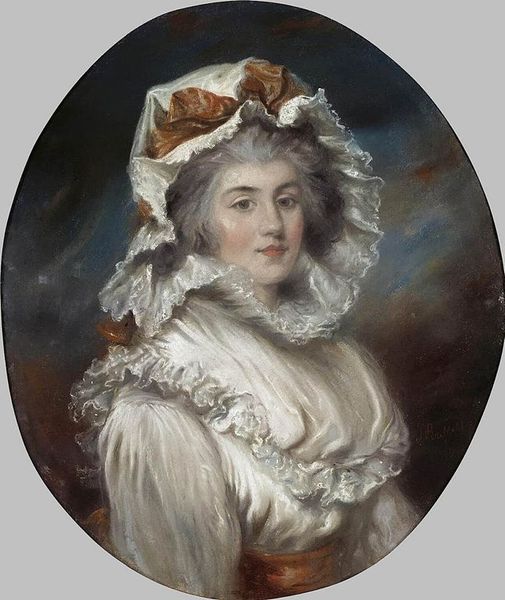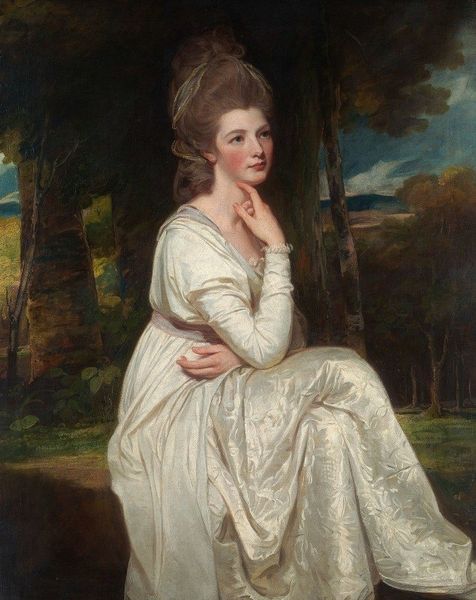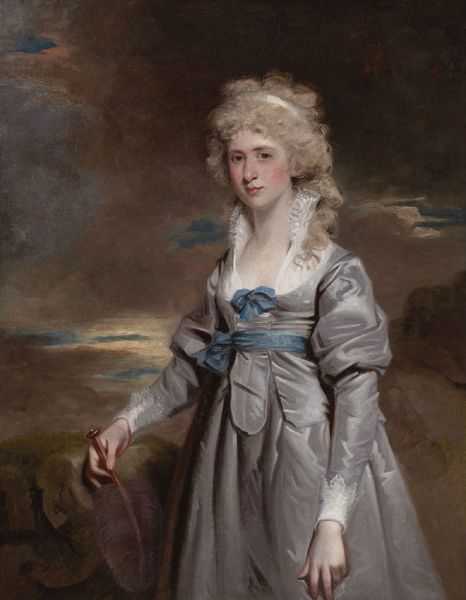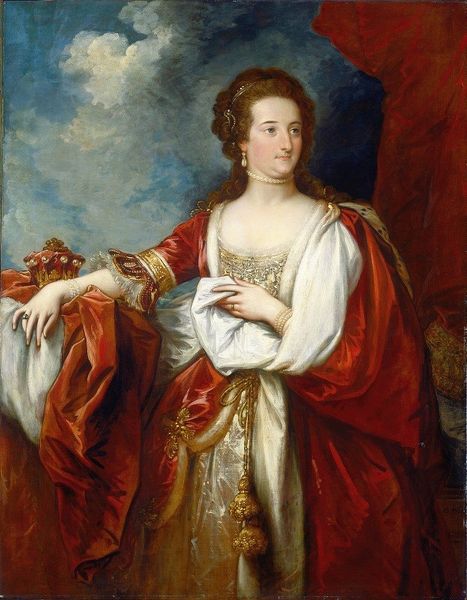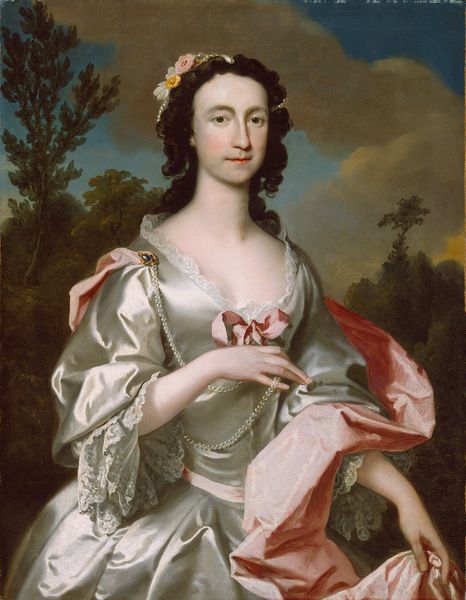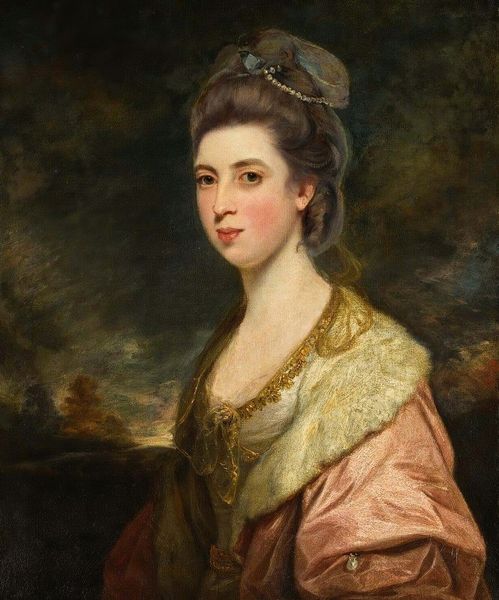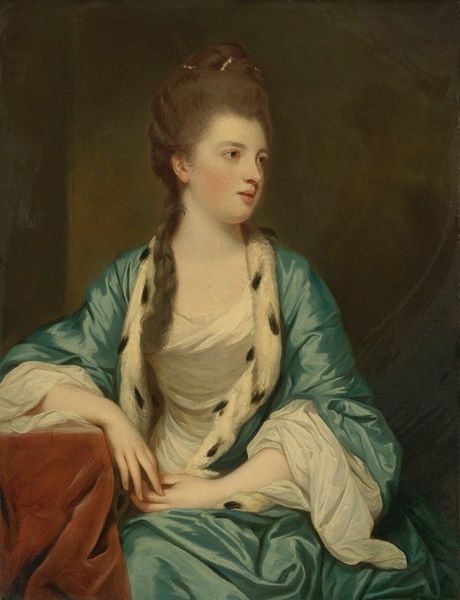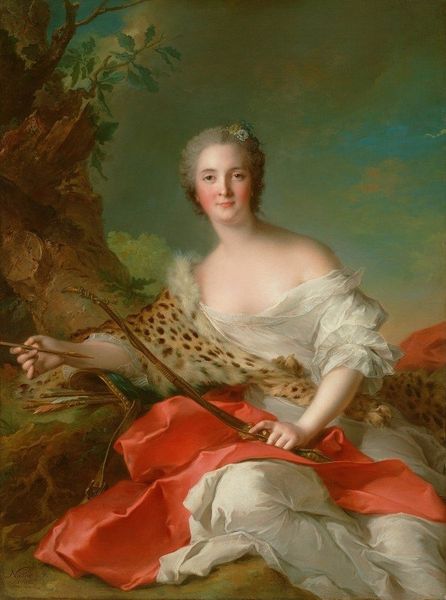
Copyright: Public domain
Charles Willson Peale painted this double portrait of Benjamin and Eleanor Ridgely Laming in America, sometime between 1788 and 1793. It exemplifies the artist’s approach to portraiture as a means of conveying social status and cultural values. Peale subtly communicates information about the couple. The parrot, peaches, and open landscape denote wealth, leisure, and connection to the natural world; the couple were part of the landed gentry in Maryland. Peale's paintings were informed by the social structures of the time and also by the scientific rationalism of the enlightenment. He founded the first major museum in the United States, dedicated to natural history and American portraiture. Examining the archives of Peale’s museum and his writings helps us to understand how this image creates meaning through visual codes, cultural references, and historical associations. Ultimately, the role of the historian is to interpret the painting within its contemporary social and institutional context.
Comments
No comments
Be the first to comment and join the conversation on the ultimate creative platform.
